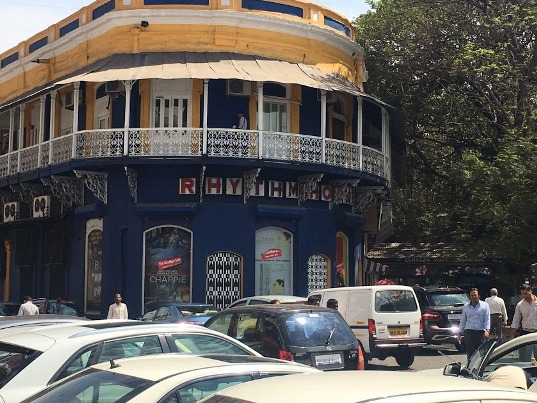 01st March, 2016
01st March, 2016The year was 1999. Till then, the iconic Kala Ghoda music store Rhythm House literally held ‘Fort’. The only competition, by a large distance, was Hiro Music. But the sudden entry of megastores like Planet M near CST, Groove at Churchgate and Hi-Hat in Khar threatened to change the Mumbai scenario.
After six decades in the business, Rhythm House has closed down operations. It has survived all odds much longer than the later entrants, and the news has shocked all who patronised it. Soon, there will be no super-large outlets left to buy physical music formats like compact discs and DVDs. Digital formats and online retail have taken over.
Who’s to blame? What has destroyed brick-and-mortar music retail in India? Broadly, we can look at two areas – how the stores operated and the way consumer mentality has changed.
Let’s go back 16 years. Most new stores modeled themselves on international biggies like HMV, Tower Records and Virgin Megastore. When they came in, their property was larger and they tried unique marketing methods. Earlier, music buffs had to go all the way to Kala Ghoda, but now they had more options in terms of locality.
The new stores had a huge and wide range of titles, satisfying hardcore collectors. They would encourage browsing, which would also lead to more impulse purchases. And they had some fantastic offers to lure customers. Groove and Planet M had special rooms for ‘serious’ audiences who listened to western classical, jazz, blues and Indian classical music. Groove had a stage where musicians performed and video concerts were screened. Most stores became venues for album launches and talent competitions.
The megastore concept wasn’t restricted to Mumbai. Planet M went multi-city. The Music World chain, started a few months before Planet M in 1999, reported great success from its Kolkata, Chennai, Kochi and Bangalore stores. In the 2000s, Landmark and Reliance TimeOut started multi-vertical stores – books, music and other categories like toys, gifts and stationery. Book stores like Crossword and Sapna Book House had large music sections. Medium-sized stores like Maharashtra Watch & Gramophone Company in Dadar specialised in Indian classical music.
The problem with the large music stores, however, was that one had to fill them completely, with the right music. This often led to over-stacking – a classic case being Landmark at High Street Phoenix. It had probably every western classical composition one could dream of, but hardly anybody bought.
Staff training was also a key element. Service plays a paramount role, and besides being deeply knowledgeable about genres, salespersons have to understand customer tastes. They need the ability to recommend additional purchases on the basis of what customers are already planning to buy. This was largely missing, except in Rhythm House, Groove and some TimeOut stores like Bangalore and Gurgaon.
The combination of high rentals, unsold stocks, falling margins and rising audio piracy affected operations. Hi-Hat and Groove shut down years ago, and two years ago, Music World and TimeOut announced their exit. Other stores changed strategies. Planet M sold mobile phones and Landmark forgot the word ‘music’. Only Rhythm House retained its image and customer loyalty, and Maharashtra Watch continues to sell classical music.
The market had changed. What happened in India wasn’t too different from what occurred internationally. Over the past decade, changing audience preferences created a negative impact. From hi-fi audio systems, listening platforms moved to computers, iPods and mobile phones.
Downloading became a fad. Rather than waste shelf space on CDs and read printed inlay cards, people preferred storing music on their laptops or iPods, and Googling for information. Those who visited stores made fewer impulse purchases, and often jotted lists of albums they could get online.
Many opted for free music and movies, though some bought them legally. Through YouTube, one could get the rarest songs without paying a penny. If music television and FM radio were earlier used to promote singles from albums, people today just listen to whatever is played. Who wants albums?
With online retail increasing, one can get CDs and even vinyl records delivered home, instead of travelling to the store. The limited number of vinyl record buyers get their stuff from smaller outlets. The concept of file sharing has gained prominence. Use a pen drive or post Adele’s song Hello on Facebook or WhatsApp, and everyone joins the party. Or simply have a nice music app on your Smartphone. Even Saregama India aka HMV recently launched its Classical App as physical sales were slow.
Sensing the changing consumer preferences, music labels also altered strategy. Many international albums were released only in digital format or imported in small numbers, as against the earlier practice of locally manufacturing in bulk. Bollywood and other Indian music labels cut down on physical volumes, and switched to digital platforms.
In such a scenario, how can the music megastore survive? Convenience has replaced ambience. Giga-bytes have tera-bitten the physical music industry. Brick-and-mortar stores have been clicked-and-murdered.
Hats off to Rhythm House for being there so long. The least one can do in tribute is stop downloading free music. Have some conscience, folks.
By Narendra Kusnur
Narendra Kusnur has been in the field of journalism for over 30 years and has been a music columnist with Mid Day publication for 10 years. He has also worked with EMI Virgin as a label manager and later with Reliance Retail as a Chief Manager. He presently is a freelance journalist and writes for Mid – Day (Mumbai) and The Hindu (Mumbai edition).
